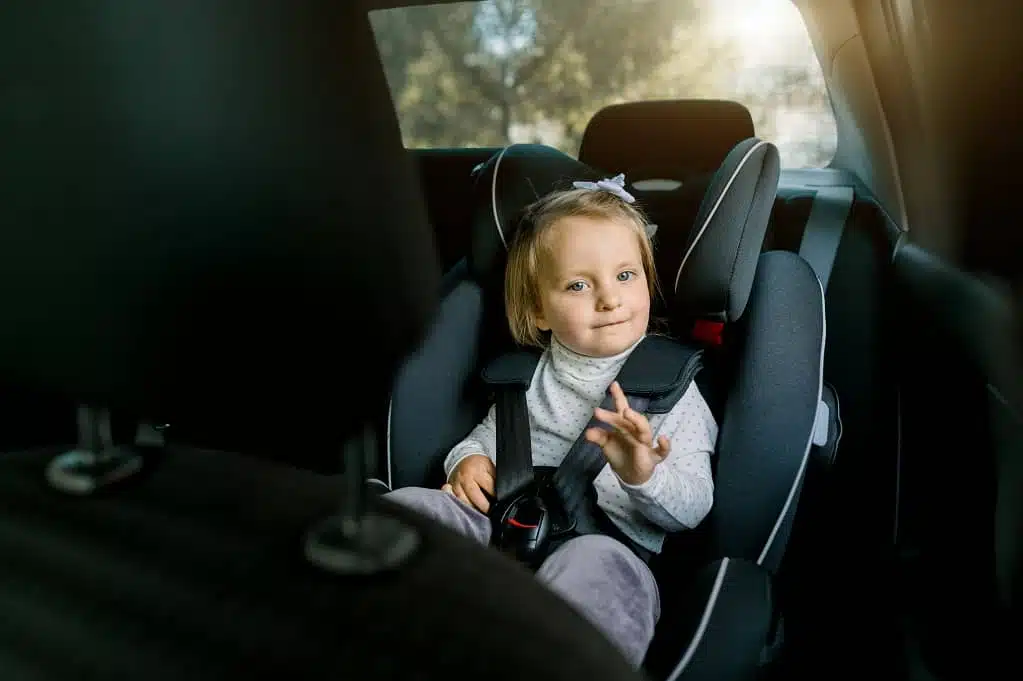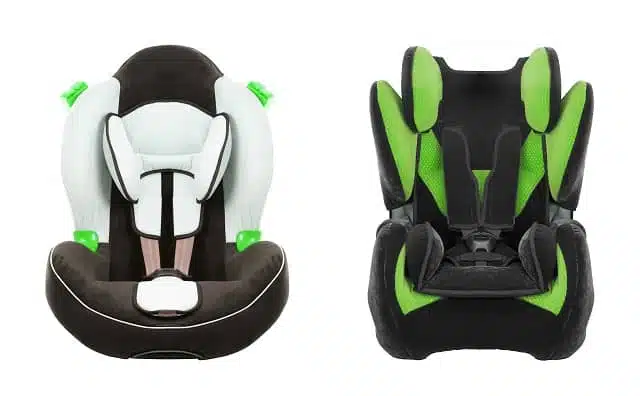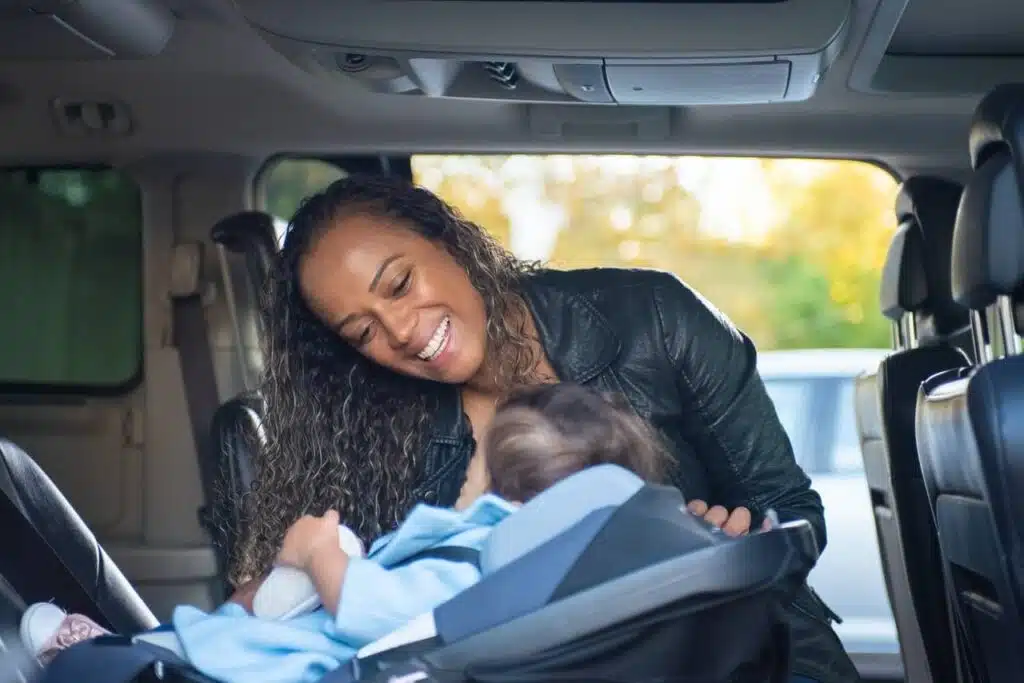Introduction:
While I tried to write in passing about types of car seats by age in a previous article, I’ll be writing extensively on this very article guide on types of car seats by age and be providing you with visual baby growth charts to make it even easier for you to understand everything.
Just when you give birth to your baby and will be leaving the hospital soon, your baby’s first ride is meant to start in a rear-facing car safety seat. This recommendation is made by the American Academy of Pediatrics (AAP).
You are meant to use this type of infant safety seat for your baby for as long as possible, say up to 2 years of age, and in some cases up to 4 years depending on your child’s height and weight at that time.
As with growth, a baby will outgrow his present baby seat. At this point you need to change to the rear-facing-convertible type. Mind you, this will come anywhere within the 2 – 4 years.
After this stage, your child who is now aged a toddler and about beginning school, a preschooler will then advance to the forward-facing convertible and the forward-facing car seat with harness (straps).
At the age your child is due for school, they would have reached the age for the belt-positioning booster. And that would be at 4 feet 9 inches in height, at about 8-12yrs.
As a general rule of thumb, all children under the age of 13yrs are to still ride in the back seat.
So, this was just a very quick introduction to brief you on the different types of car seats by age. Now we shall go in details.
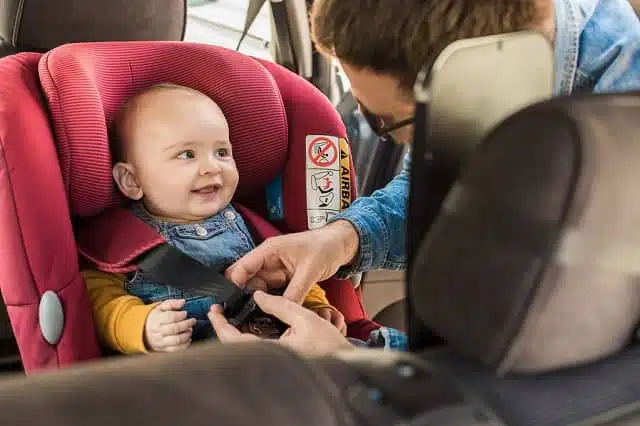
Types of Car Seats by Age
There are four types of car seats including the vehicle’s car seat that are to be used at four different stages of a child’s growth – toddlers and infants’ stage, toddlers and preschoolers’ stage, school-aged children and older stage.
These car seat types include;
- Rear-facing car seat:- age: 0 – 2 years or more; weight: up to 40 lbs. or more.
- Forward-facing car seat with harness:- age: 4 – 8 years; weight: up to 60 lbs. or more.
- Booster seat – belt-positioning booster seat:- age: 8 – 12 years
- Vehicle’s car seat – vehicle’s car seat belt – from 12 years above (once they are big enough for the seat belt to fit correctly)
Toddlers and Infants – Rear-facing Car Seat:- age: 0 – 2 years or more;
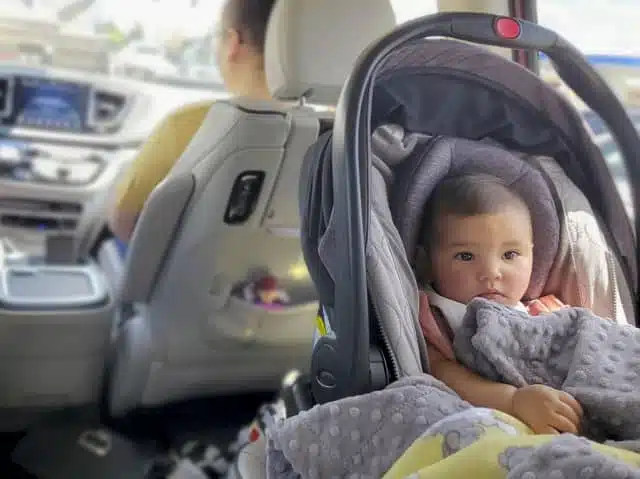
The AAP in the new child passenger safety seat guidelines, strongly recommends that families and parents let their children ride along in a rear-facing car safety seat from 0 month to as long as possible, up to the age of 2 and to a upper limit of 4.
This recommendation is also based off the limits made available by your baby car seat manufacturer for weight, length and height.
One of the several questions that would come while you are pregnant and preparing for your delivery is, when do you buy a car seat? While that may not be the only question, you will also need guide on how to choose a car seat.
The base line is that infants should ride in a rear-facing car seat until at least 2 years.
Most car seat manufacturers have their products designed to accommodate up to 40 lbs. or more so a baby can comfortably still use their infant car seat up to 2 years of age.
According to this same research and analysis, there is confident results that rear-facing car seat up to the age of 2 years is superiorly safe and efficient for your baby’s safety.
In summary, for your new baby, you will need the rear-facing type of car seat which he is to use up to the age of 2 years at the minimum.
Also go through your infant seat manufacturer guideline to see further recommendations.
Types of Rear-facing Car Seats
There are three types of rear-facing car seats:- rear-facing-only, rear-facing convertible, and rear-facing all-in-one car seats.
When your baby reaches the required limit (height and weight) set by your car seat manufacturer, you are advised to switch to the next type of car seat which should still be the rear-facing type.
Rear-facing-only seat >> rear-facing convertible seat >> rear-facing all-in-one seat
1. Rear-facing-only Seats
This type of car seat;
- Is for infants up to a weight range of 22 – 35 pounds and height of 26 – 35 inches, depending on the model. Check before buying.
- Is small in size and have carrying handles for easy carriage
- Usually comes with a base. You can have the base fixed in the car and can always detach the safety seat anytime. If you need to switch between cars you can buy another base for the other car or you can learn to install a car seat without base.
2. Rear-facing convertible seat
This type of car seat is quite flexible;
- it can be used as a rear-facing car seat and later converted to a forward-facing as your child outgrows the previous design (either by weight or height) – this means your child can use it longer, however it is bulkier and doesn’t come with a carrying handle or separable bases.
- it may have a higher limit depending on the manufacturer. Some allows up to 40-50 lbs. in weight. This feature is also why you can use it for longer when you convert it to the forward-facing.
- it has a 5-point strap system that attaches at the shoulders, hips and between your baby’s legs.
3. rear-facing all-in-one seat
As the name implies, “all-in-one,” it can be used as rear-facing, forward-facing, and/or as belt-positioning booster car seat. Call it the budget saver.
This type of car seat however, is usually bigger than the other types and may not fit in a small car so you may need to check with your vehicle. Here is an article on the best car seats for small cars.
Just like the convertible rear-facing seat, this can accommodate up to 40-50 pounds in weight and do not also come with a carrying handle or a separate base
Installation Guideline Tips for Rear-facing Car Seat Types
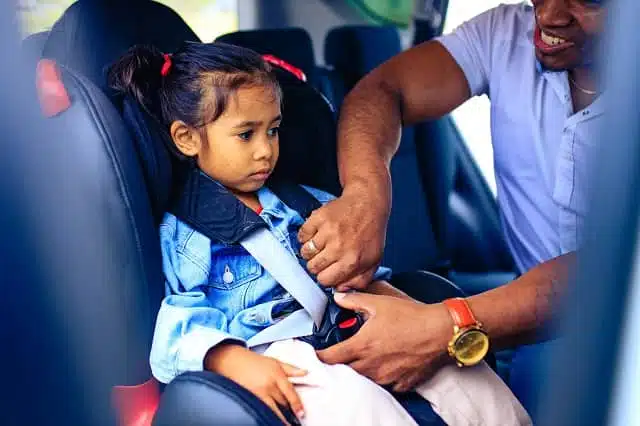
You are advised to read the car seat manufacturer manual as the ultimate guide to installing your car seat. In the event that you may need help determining the safest place for your infant car seat, this can come handy.
A child passenger safety technician (CPST) should always be your next point of call for ultimate guidance.
Here are important guidelines to keep in mind when installing a rear-facing car seat:
- You should place the car seat straps in slots that are right below your child shoulders. Sometimes they may just be at the shoulder region instead of below.
- Make sure the straps are tight enough, but not discomforting, and that the chest clip is at the center of the chest and not at the abdomen.
- Ensure the baby seat is installed securely with the lower anchors or with a locked seat belt. While some baby car seat have an integrated lock system, you’ll need to verify yours has it and then follow the manufacturer’s manual on how to use it.
- The safest place to place your baby car seat is in the center rear seat. Never place a rear-facing car seat in the front passenger seat if the airbag is active. In the event of a car crash, the pressure of the inflated airbag can cause severe injury to the back of your baby’s head. In worst case, death may occur.
- Ensure that you installed the seat at the correct angle. You don’t want your baby’s head to lean forward
- Remember a CPST remains the ultimate guide you can meet to help you thoroughly. You can check with one in your area.
Toddlers & Preschoolers – Forward-facing car seat with harness:- age 4 – 8 years
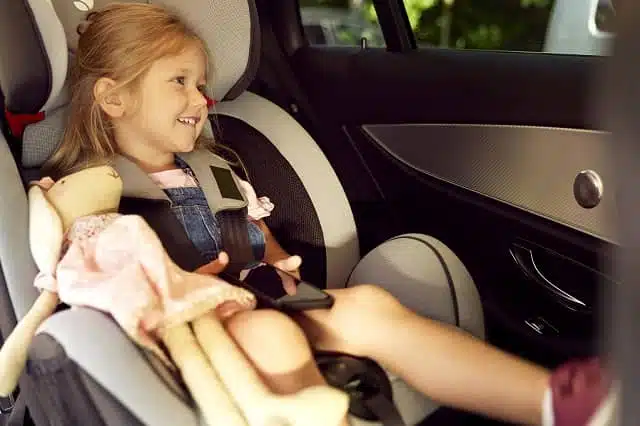
Depending on what age your child is right now, and other factors such as weight and height, then the instructions already given on the manufacture’s manual of the car seat you are using for your toddler, you may now advance to the next stage.
The forward-facing car seat is recommended for children who have outgrown the limit for their rear-facing-only or convertible car seat, which are weight and height.
While the rear-facing car seat can accommodate up to 40 pounds or more within the 2 years minimum required age, the forward-facing car seat with harness will accommodate children up to 60 lbs. weight or more.
It is best practice to allow your child to ride in a seat with harness and can do so for as long as possible up to 4 years of age.
When your child outgrows a seat before 4 years, you can switch up to another that is approved for their weight and height.
Ideally, your child is to ride in forward-facing seat up to the age of 8 years before moving up to a booster seat.
Types of forward-facing car seat
There are four types of forward-facing car seats – convertible seats, combination seats with harness, integrated seats, and travel vests.
When your baby reaches the required limit (height and weight) set by your car seat manufacturer, you are required to switch to the next type which should now be the forward-facing.
convertible seats >> combination seats with harness >> integrated seats >> travel vests.
1. Convertible seats
These types of seats can be converted from rear-facing types to forward-facing.
This was the type we looked at earlier under rear-facing types.
Here is a comprehensive guide to help you on how to choose a convertible car seat.
2. Combination seats with harness
These types of seats can be used as either forward-facing with or without harness.
With harness, it can be used for children who weigh up to 40-65 pounds depending on model. While without harness, it will serve as a booster and accommodate up to 100 – 120 pounds.
3. Integrated seats
These are seats types that comes with your vehicle. That is, it is built into your car right from the manufacturer.
This type is usually the forward-facing model. However, you are NOT to use it till your baby reaches the age, weight and height allowed by law.
4. Travel vests
These are vests that can be worn by children between 22-168 lbs. in weight.
They are useful as a lap-only seat belt in the back seat and for children with special needs.
Installation guideline tips for forward-facing car seat types
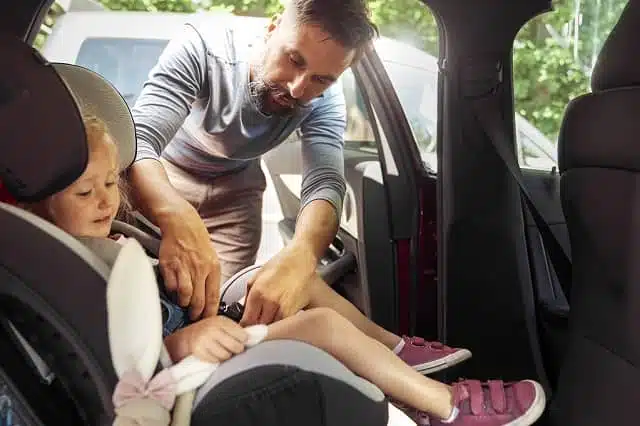
Again, you are advised to read the car seat manufacturer manual as the ultimate guide to installing your car seat.
A child passenger safety technician (CPST) should always be your next point of call for guidance.
Here are important guideline tips to keep in mind when switching from a rear-facing convertible or all-in-one seat to forward-facing:
- You should move the shoulder straps to the slots that’s just above your child’s shoulders, some may be at the shoulder region instead of above. Double check with the manual that you positioned the straps correctly.
- Check that the angle of the seat is upright in your vehicle. You may need to adjust the recline angle to get this right.
- If you are using your vehicle seat belt to secure the safety seat, you make sure it goes through the forward-facing belt path. Also make sure the seat belt is locked tight.
- This video will guide you more.
School-aged Children – Belt-positioning Booster Seat:- age: 8 – 12 years
When your growing child exceeds the weight and height limits for the forward-facing seat, they should now ride in a belt-positioning booster seat (usually at the age of 8 years), until they can use a seat belt that fits their size correctly (usually at the age of 12 years).
You should note, irrespective of size, your child should ride at the back seat if they are still under 13 years for optimal protection.
For the height limit, your child’s shoulders are above the top harness slots of the forwarding-facing seat.
Another criterium that shows your child has outgrown the forward facing seat is that the top of their ears is up to the top of the seat.
Types of Booster Seat
There are two standard types of booster seats – high-back seats, and backless vests.
Booster seats are designed to serve the purpose of raising a child up so that the car lap and shoulder seat belts fits properly over the chest region of the body which is regarded as the strongest parts that can hold a person firm on the seat.
One thing you should know is that many booster seats just rests on the car seat without an anchor and are not secured to the seat till the seat belt is fastened over the child, while some other models come with lower anchors along with lap and shoulder belts.
Not many vehicle manufacturers offer an integrated booster seat like the forward facing seat.
Installation guideline tips for booster seat
As with other safety car seat, you are advised to read the car seat manufacturer manual as a guide when installing your car seat.
A child passenger safety technician (CPST) should always be your next point of call for ultimate guidance.
Here are important guideline tips to keep in mind when installing a booster seat:
- The lap and shoulder belts must be used with the booster seat.
- Also, make sure the lap belt lies flat and snugs across your kid’s upper thighs.
- The shoulder belt also should be across the center of your child’s chest and shoulder and off the neck.
- This video will guide you more.
Vehicle’s Car Seat Belt – 13 years above
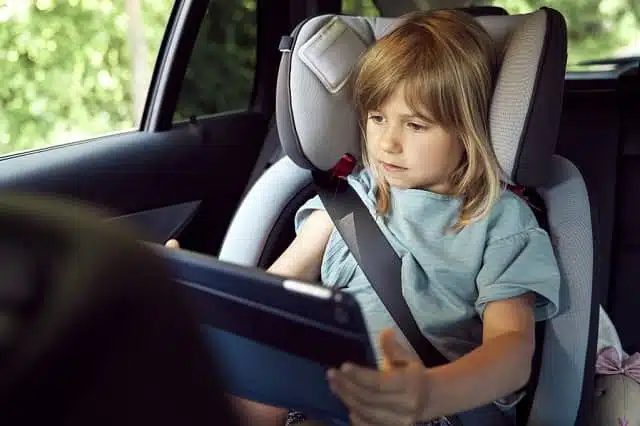
First things first, children under the age of 13 years should ride in the back seat.
Children are still meant to use a booster seat till they are reach about 4 feet 9 inches in height and are 8-12 years of age when they would have been big enough in size to fit in a seat belt.
Most children do reach that point between 10-12 years. But until then, they should always use the lap and shoulder belts for best protection.
Using a seat belt
Using a seat belt really isn’t a tough thing. To be sure the seat belt fits correctly on your child, the following should be observed:
- The shoulder belt should lie across the middle of the chest and shoulder and not the neck.
- The lap belt should be at the lower abdomen just across the upper thighs and not the belly.
Car seat weight chart and car seat stages
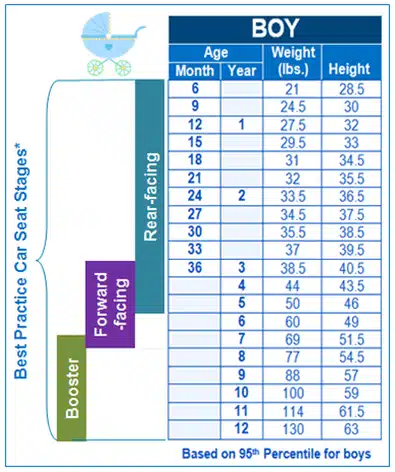
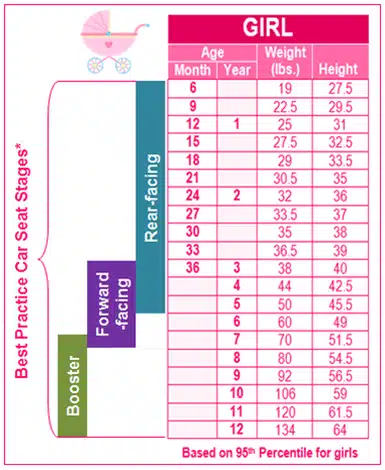
Culled from ProCarSeatSafety and developed with information from Clinical Growth Charts, CDC, this chart will help with better pictorial guide to understand this whole article and for reference on how to check the weight and height of your child and the age, so you can know when to switch to the next stage of car seat.
Frequently Asked questions (FAQs)

How many types of car seats are there?
There are four types of car seats including the vehicle’s car seat that are to be used at four different stages of a child’s growth – toddlers and infants’ stage, toddlers and preschoolers’ stage, school-aged children and older stage.
These four car seat types include:-
- Rear-facing car seat:- age: 0 – 2 years or more; weight: up to 40 lbs. or more.
- Forward-facing car seat with harness:- age: 4 – 8 years; weight: up to 60 lbs. or more.
- Booster seat – belt-positioning booster seat:- age: 8 – 12 years.
- Vehicle’s car seat – vehicle’s car seat belt:- from 12 years above (once they are big enough for the seat belt to fit correctly)
Do you need different car seats for different ages?
Yes.
According to American Academy Pediatrics, parents and families are recommended to ride their children in a rear-facing car safety seat for first two years of their life and then change to other car seats as the child outgrow the limit of the previous seat.
This is to ensure optimal safety of your child as research reveals it can help reduce the risk of death or severe injury by over 70%.
Final wrap-up
This article is aimed to give you premium guide on the different types of car seats by age, and to answer the questions, how many types of car seats are there and ultimately help you.
I hope I have been able to satisfy your knowledge and you learnt something?

